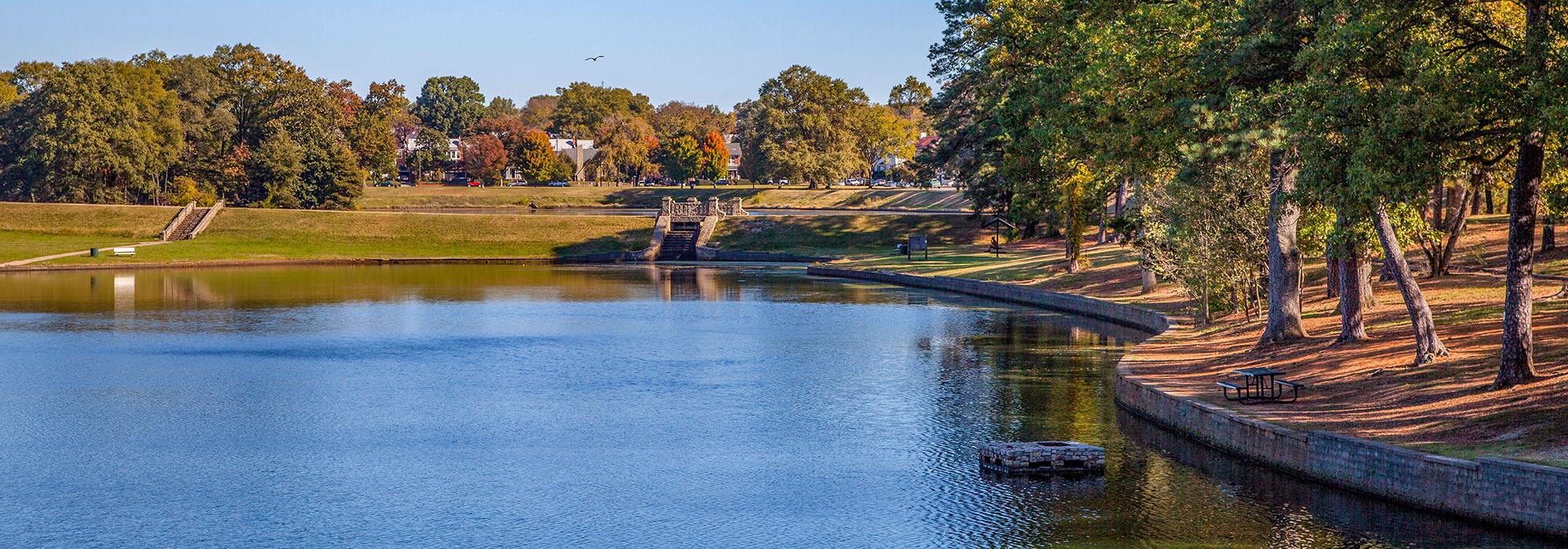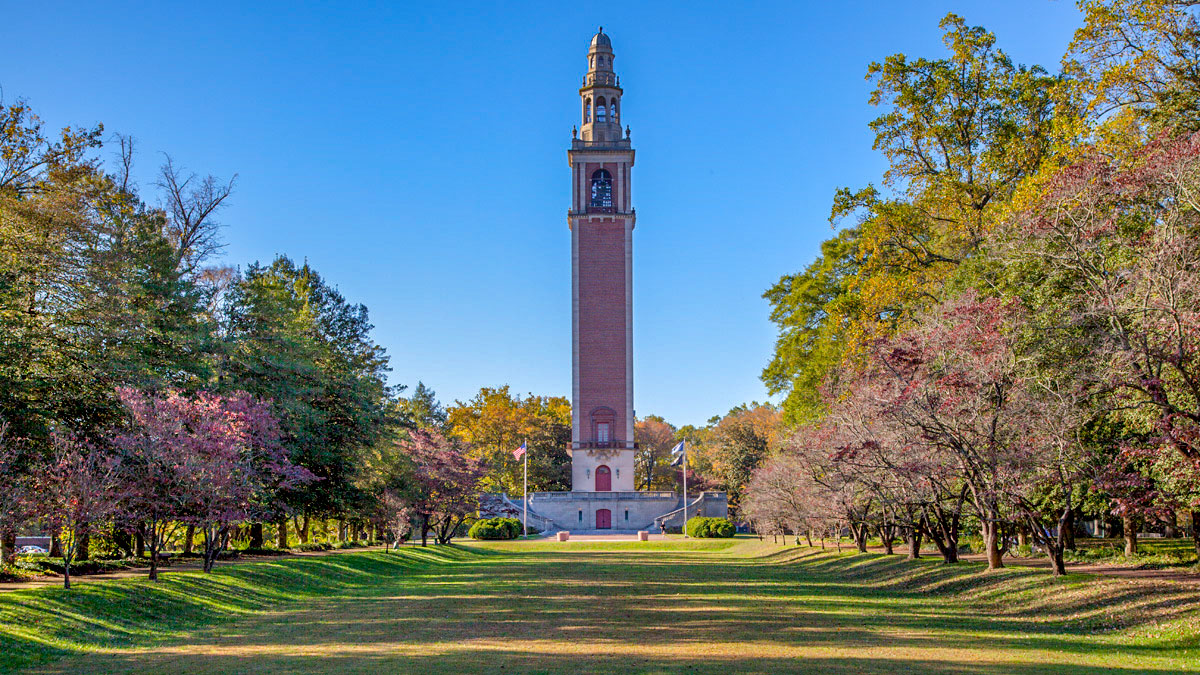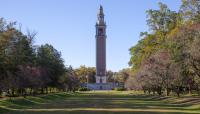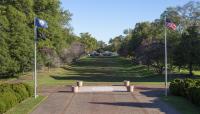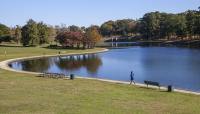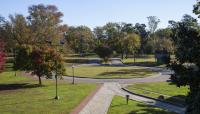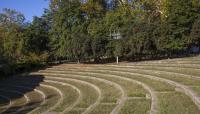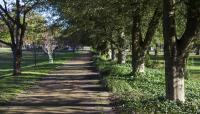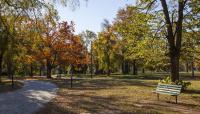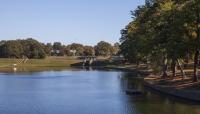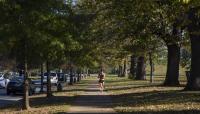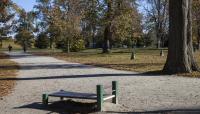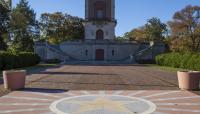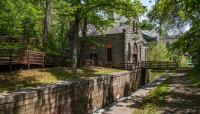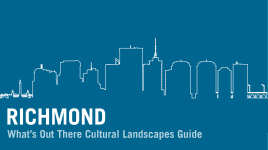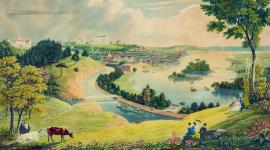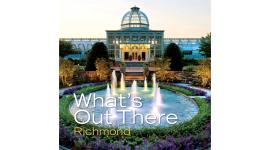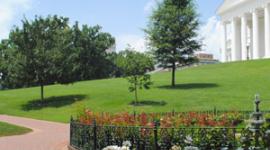Landscape Information
Addressing Richmond’s growing need for a safe water supply, engineer Wilfred Cutshaw developed the 60-acre New Reservoir Park in 1874 to surround an elevated lake. To lift water from the James River to the reservoir, Cutshaw designed a granite Gothic Revival pump house centrally located in a park that included lawns, groves, and a waterfall. In 1907, the park was renamed for Richmond’s founder William Byrd II and by 1917 the city engineer’s office had expanded the park to the north and east and constructed two additional lakes and a small dam near Poplar Vale Cemetery. Pathways were designed to connect the eastern expansion with the original park acreage through the linear Westover Terrace neighborhood, which bisects the park.
In 1922, a statue of George Washington by Ferruccio Legnaioli was erected and four years later the cornerstone was laid for the 240-foot tall Virginia War Memorial Carillon, designed by architects Cram and Ferguson. Situated in an open lawn and approached via an axial walk lined by hollies and dogwoods, the Georgian-style limestone bell tower was not completed until 1935. Twenty-two years later, the 2,400 seat Dogwood Dell Amphitheater was constructed adjacent to the Carillon on the former site of Cutshaw’s dogwood nursery.
Abutting Maymont to the south, Byrd Park has grown to include 287 acres of naturalistic woodlands and open space for both passive and active recreation. Meandering paths connect to tennis courts, the lakes, and the amphitheater and provide hiking opportunities through the woodlands. In 1984, the Carillon was added to the National Register of Historic Places; the pump house was listed in 2002 and the entire park was listed in 2015.



